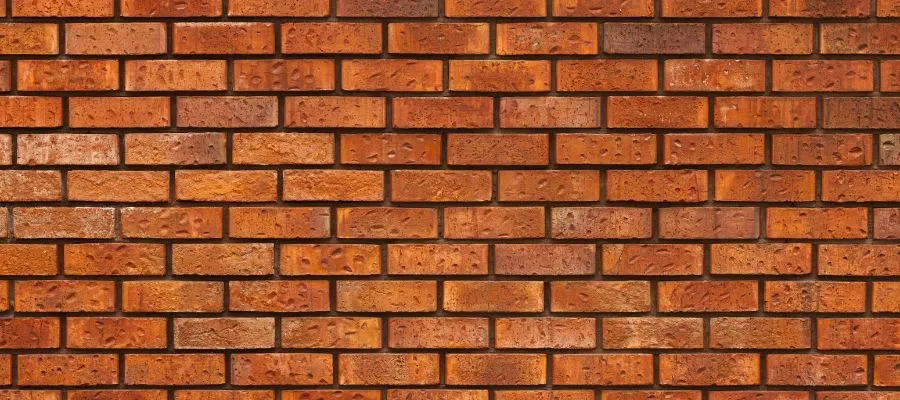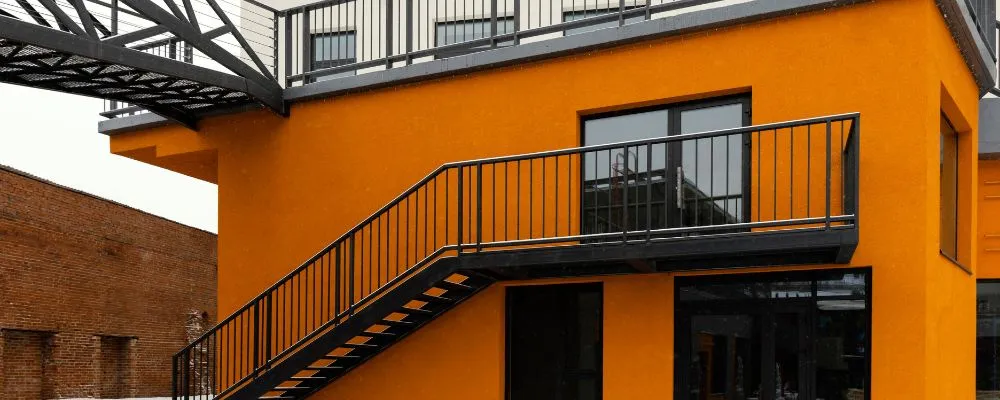Choosing the right cladding materials for your exterior walls is significant in building a new home. It’s not just about enhancing the appearance of your home but also about protecting it from the elements. With many choices, selecting the most suitable wall materials can be challenging. In this blog, Brick & Bolt aims to empower you with knowledge by discussing the different types of cladding, their advantages, and the key factors to consider when making this decision.
What is Cladding?

Before discussing the different types of cladding materials, it’s important to understand what cladding is and its main purpose. Cladding is the top layer, adding to the structure’s style and look.
Types of Cladding Materials
1. Brick Cladding
Brick has been used for cladding for hundreds of years, and for a good reason. It has an elegant, classic look that goes well with many different types of architecture. Brick cladding is known for being long-lasting, requiring little upkeep, and being a great insulator. In addition, it doesn’t catch fire and can withstand bad weather, making it a great choice for homes that want something that will last.
2. Stone Cladding
Natural stone cladding gives off an air of class and wealth. Stone cladding materials, like limestone, granite, and slate, come in many colours, textures, and designs, making the outside of your home look very different and interesting. Stone cladding may cost more than other choices, but it is very strong and can last for decades with the right care.
3. Wood Cladding
Wood cladding is a great choice for people who want a warm and natural look. Traditional cedar shingles are one type of wood siding, and more modern engineered wood goods, such as fiber cement boards, are another. Cladding made of wood needs more upkeep than other choices, but it can give your home a unique look and feel. Many eco-friendly wood cladding materials come from trees that will grow back.
4. Vinyl Cladding
Vinyl cladding, also called vinyl siding, is a popular and inexpensive choice for homes. It holds up well over time, doesn’t need much care, and comes in many colours and styles that make it look like wood or stone. Vinyl cladding is also resistant to water, making it a good choice for places where it rains or is humid.
5. Metal Cladding
Metal cladding, like steel or aluminium, has a sleek and modern look that complements modern building styles. Metal cladding is strong, lasts a long time, and doesn’t catch fire or get damaged by the weather. Some metal cladding materials are also energy-efficient, which can help you save money on your home’s energy bills.
6. Fiber Cement Cladding
Fiber cement cladding is a durable choice that can be used in many ways. It combines the good things about cement and cellulose fibers. Because it doesn’t catch fire, get wet, or be eaten by bugs, it’s a low-maintenance choice for homes. Fiber cement cladding can look like many different materials, like stone or wood, giving you a lot of style choices.
7. Paint Cladding
Though the paint isn’t usually used for cladding, it can be used that way, especially on concrete or stone surfaces. Paint cladding uses a special coating system that adds colour and style and protects against the weather and other natural factors. This choice is often cheaper than other cladding materials, and you can get it in many different colours to fit your tastes.
8. Glass Cladding
Glass cladding is becoming increasingly common for a sleek and modern look. With glass cladding systems, you can make beautiful walls that let natural light into the building while keeping it warm and saving energy. Glass siding can be tinted, frittered, or patterned to achieve different design looks. This makes it a flexible material for modern building styles.
9. Terracotta Cladding
Terracotta is a type of baked clay used as a cladding material for hundreds of years, mostly in the Mediterranean and Southwestern buildings. The terracotta cladding has a warm, earthy tone and can be shaped and designed in many ways to make the outside of a building look unique and attractive. Also, clay is a long-lasting material that doesn’t need much care and can stand up to bad weather.
Factors to Consider When Choosing Cladding Materials
1. Climate and Weather Conditions
The temperature and weather in your area should greatly impact the cladding material you choose. For instance, if you live where it gets very hot or very cold or rains a lot, you should pick a cladding material that can handle these situations without losing strength or good looks.
2. Maintenance Requirements
Different types of cladding require different amounts of upkeep. Some choices, like brick or fibre cement, don’t need much upkeep, while others, like wood, might need to be cleaned, stained, or painted more often. Consider whether you are ready and able to maintain the cladding material you choose.
3. Budget
Cladding materials come in a wide range of prices, so it’s important to consider your budget when choosing. Some choices, like stone or wood, may cost more upfront, but they can make your home more valuable over time. Vinyl or fibre cement, on the other hand, are less expensive choices that can save you money without sacrificing quality.
4. Aesthetic Appeal
How the outside of your house looks shows what kind of style and taste you have. When picking out cladding materials, think about the overall look you want to achieve. Would you rather have a traditional or modern look? Are you interested in natural products or more modern ones? Think about how different cladding materials will fit your personal tastes and the style of your home.
5. Energy Efficiency
Some types of cladding, like insulated plastic or metal, can help your home use less energy by adding more insulation and stopping heat from escaping. Ensure you learn about the insulating qualities of different cladding choices and how they can affect your home’s overall energy performance if saving energy is important to you.
Making the right choice about the cladding materials for your new home is an important one that will affect how it looks and works. You can make an informed choice that fits your needs and tastes by considering climate, maintaining needs, aesthetically pleasing, and energy efficiency. Don’t forget that the cladding material you pick will protect your home and showcase your style and taste. Take the time to look at all your options, talk with Brick & Bolt Bangalore professionals and choose to make your new home look better and last longer for years.

